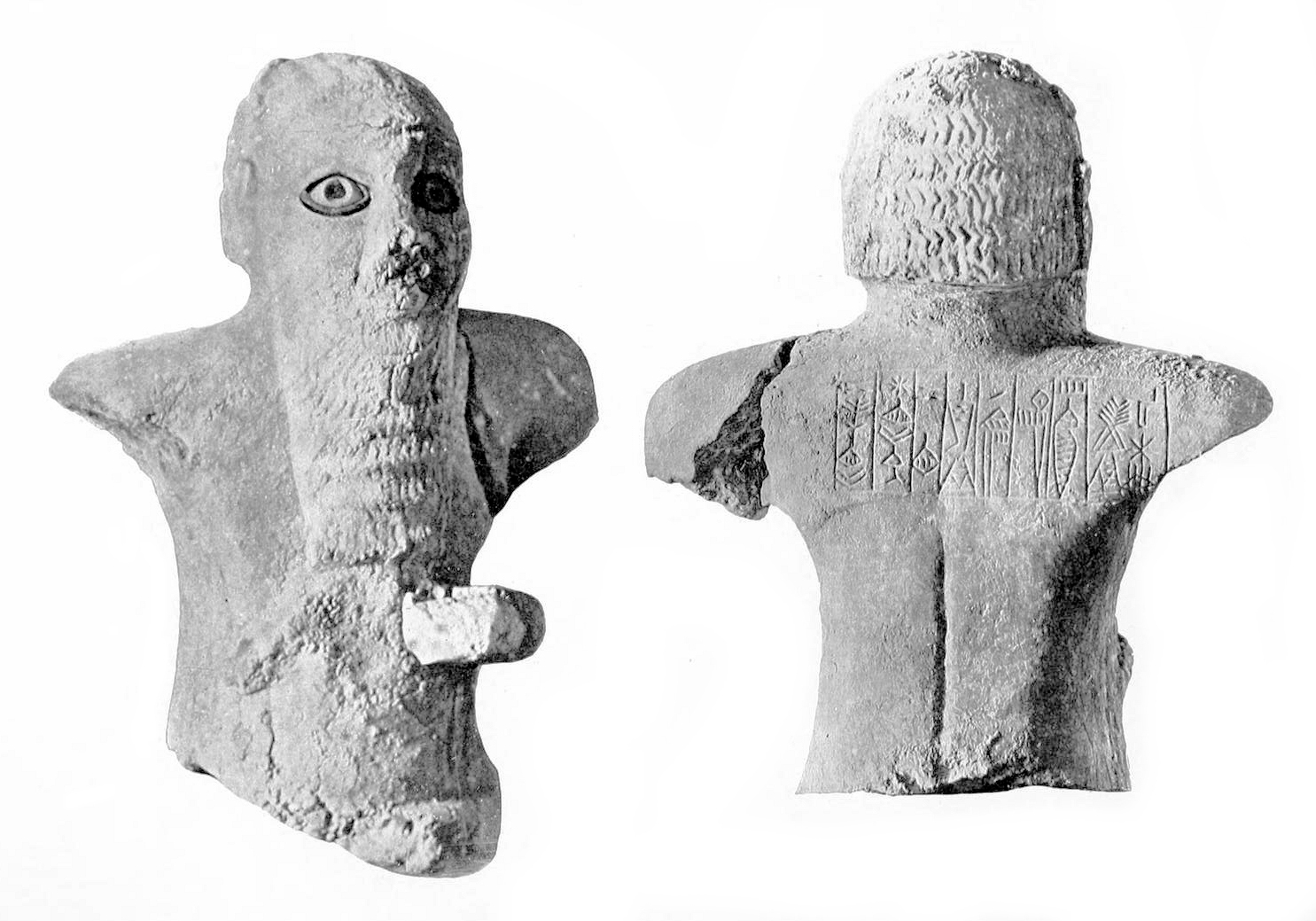|
Narunde
Narundi ( dingir, dna-ru-ti) or Narunde was an Elamite religion, Elamite goddess worshiped in Susa. She is attested there roughly between 2250 BCE and 1800 BCE. Multiple inscriptions mention her, and it assumed she was a popular deity at the time. In later periods, she occurs exclusively in Mesopotamia, where she played a role in apotropaic rituals in association with the Sebitti. Many attestations are available from late Assyrian sources, but it is not certain if they should be regarded as an indication of continuous worship. In Elam Narundi is the oldest attested Elamite deity. She first appears in sources contemporaneous with the reign of the Akkadian Empire, and according to Javier Álvarez-Mon enjoyed a degree of popularity in the early periods. Heidemarie Koch suggested that she functioned as the goddess of victory. She was worshiped in Susa at least since around 2260 BCE, as indicated by a statue dedicated to her found in the so-called "Manishtushu shrine." Its style is ch ... [...More Info...] [...Related Items...] OR: [Wikipedia] [Google] [Baidu] |
Sebitti
The Sebitti or Sebittu are a group of seven minor war gods in Neo-Sumerian, Akkadian mythology, Akkadian, Babylonian religion, Babylonian and especially Assyria#Religion, Assyrian tradition. They also appear in sources from Emar. Multiple different interpretations of the term occur in Mesopotamian literature. Description The word Sebitti and its variations are typically translated with a meaning along the lines of "the seven", "group of seven" or "the seven of them". They are always presented as masculine deities, and are Kinship, kin in one way or another (either brothers or half brothers). Their most prominent characteristic across all versions is their warlike nature. Variations Assyriologist Frans Wiggermann enumerates the following known identities of this group: Anthropomorphized Pleiades The Sebitti can be anthropomorphic representation of the Pleiades or another stellar or atmospheric phenomenon. Sons of Enmešarra The Sebitti can appear as sons of Enmesharra, En ... [...More Info...] [...Related Items...] OR: [Wikipedia] [Google] [Baidu] |
Puzur-Inshushinak
Puzur-Inshushinak (Linear Elamite: ''Puzur Šušinak'', Akkadian: , ''puzur3- dinšušinak'', also , ''puzur4- dinšušinak'' "Calling Inshushinak"), also sometimes thought to read Kutik-Inshushinak in Elamite, was king of Elam, around 2100 BC, and the last from the Awan dynasty according to the Susa kinglist. He mentions his father's name as Šimpi-išhuk, which, being an Elamite name, suggests that Puzur-Inshuhinak himself was Elamite. In the inscription of the "Table au Lion", he appears as "Puzur-Inshushin(ak) Ensi (Governor) of Susa, Shakkanakku (Military Governor) of the country of Elam" ( , a title used by his predecessors Eshpum, Epirmupi and Ili-ishmani as governors of the Akkadian Empire for the territory of Elam.Translation into French in In another inscription, he calls himself the "Mighty King of Elam", suggesting an accession to independence from the weakening Akkadian Empire. Rule His father was Shinpi-khish-khuk, the crown prince, and most likely a brother of k ... [...More Info...] [...Related Items...] OR: [Wikipedia] [Google] [Baidu] |
Cuneiform
Cuneiform is a logo-syllabic script that was used to write several languages of the Ancient Middle East. The script was in active use from the early Bronze Age until the beginning of the Common Era. It is named for the characteristic wedge-shaped impressions (Latin: ) which form its signs. Cuneiform was originally developed to write the Sumerian language of southern Mesopotamia (modern Iraq). Cuneiform is the earliest known writing system. Over the course of its history, cuneiform was adapted to write a number of languages in addition to Sumerian. Akkadian texts are attested from the 24th century BC onward and make up the bulk of the cuneiform record. Akkadian cuneiform was itself adapted to write the Hittite language in the early second millennium BC. The other languages with significant cuneiform corpora are Eblaite, Elamite, Hurrian, Luwian, and Urartian. The Old Persian and Ugaritic alphabets feature cuneiform-style signs; however, they are unrelated to the cuneiform lo ... [...More Info...] [...Related Items...] OR: [Wikipedia] [Google] [Baidu] |


